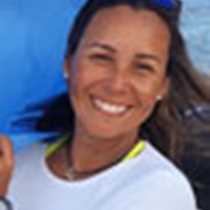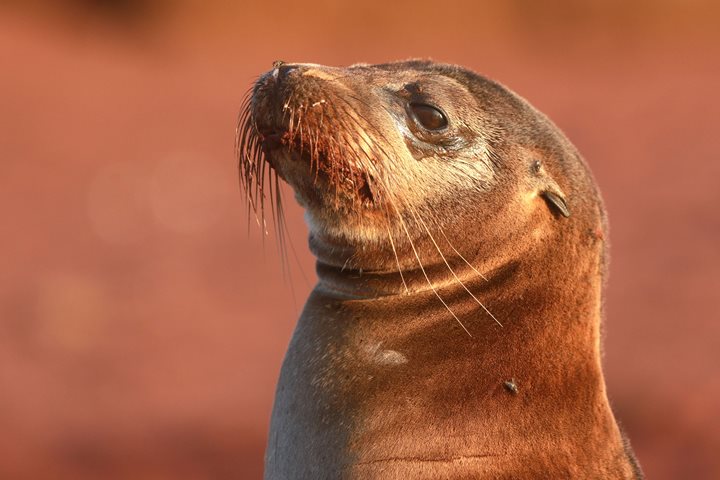Sometime in the middle of the night we have crossed the equator! We left Sullivan Bay and navigated northbound to Genovesa Island, one of the jewels of the Galápagos archipelago. Dubbed Hitchcock’s Island, it is estimated that up to one million birds may inhabit this flat, small, circular island. The vast oceans that surround it offer the perfect foraging grounds for seabirds, like red-footed boobies, great and magnificent frigates, swallow-tailed gulls and storm petrels. Every corner of Genovesa is stunning including its anchorage site, which happens to be a former magmatic chamber. A long time ago ocean waters entered the bay and then the southeastern rim gave way due to constant pounding of waves and wind action.
- Daily Expedition Reports
- 20 Jan 2018
Genovesa Island, 1/20/2018, National Geographic Islander
- Aboard the National Geographic Islander
- Galápagos
Gaby Bohorquez, Naturalist
Gaby was born and raised in Guayaquil, Ecuador. Her first job in the Galapagos was on board a 90-passenger cruise ship as the cruise director’s assistant, and she fell under the spell of the Enchanted Isles. She returned to Guayaquil to study at the ...
Read MoreShare Report
Related Reports
11/23/2022
Read
National Geographic Islander II
Isabela and Fernandina
Our day began with the chance to point out a lot of interesting geological features as we enjoyed Zodiac tours along a massive flank of Ecuador Volcano on Punta Vicente Roca. In the afternoon, we took a sunny walk on Punta Espinoza on Fernandina Island. We spotted many iguanas, and a bunch of sea lions hanging around, too.
11/22/2022
Read
National Geographic Islander II
North Seymour & Rabida Islands
Relatively small and low compared to neighboring Santa Cruz, North Seymour is located to the north of Baltra. The island is dry with predominantly low shrubs, like prickly pear cacti. The incense trees are bare during the dry season. Seabirds like frigatebirds and blue-footed boobies nest on the island, and sea lions rest on the sand when they are not fishing. Land and marine iguanas also live here. Rabida is in the middle of the archipelago and has a striking red sand beach. We observed a small colony of sea lions of all ages resting or nursing. Behind the beach, American flamingos nest in a brackish lagoon. This island is full of contrasts and wildlife that we enjoyed observing during this day of expedition.







